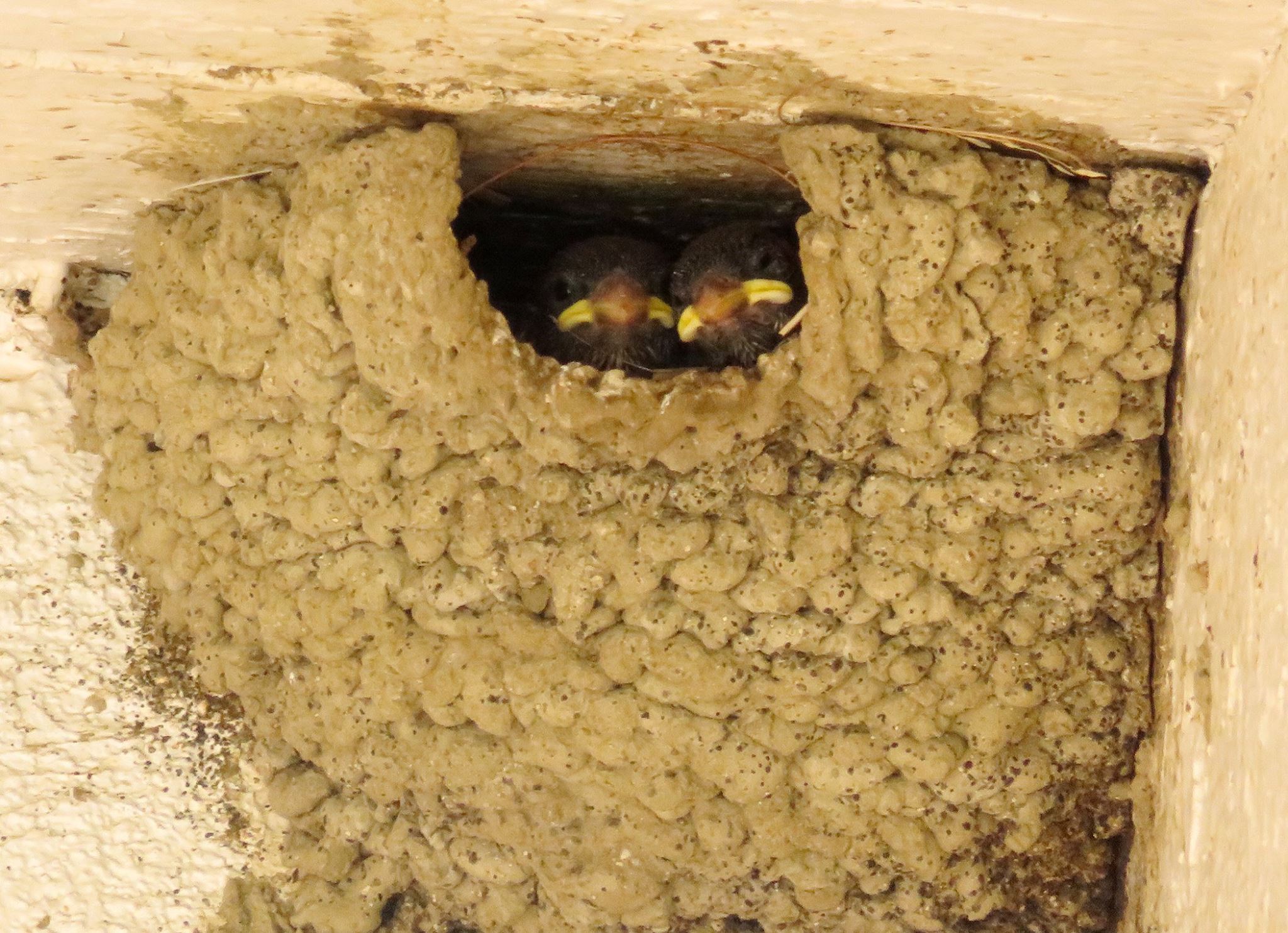 A few weeks ago, I wrote about the mosquito being the deadliest animal in the world, causing 750,000 deaths worldwide per year. Humans are the second deadliest creatures to inhabit the Earth, causing 437,000 deaths per year.
A few weeks ago, I wrote about the mosquito being the deadliest animal in the world, causing 750,000 deaths worldwide per year. Humans are the second deadliest creatures to inhabit the Earth, causing 437,000 deaths per year.
Now that you know that, I thought you might be interested to see what the other 13 of the 15 deadliest creatures might be. The list includes mammals, fish, parasites, bugs and more. Any guesses?
My guess is you’re thinking sharks. Well, sharks are indeed on the list, but they are way down at No. 15, the lowest on the list. Shark attacks that result in death are fairly rare, with an average of 6 per year worldwide.
 There are more than 500 species of sharks to help fester your fear of the creatures. They live primarily in saltwater bodies, but some species can also live in fresh water. When they bite and lose their teeth, they have numerous sets of replaceable teeth to bite you with. The more commonly known species of sharks include the great white shark, tiger shark, mako shark, blue shark and hammerhead shark. If it makes you feel better, humans are more of a threat to sharks than sharks are to humans.
There are more than 500 species of sharks to help fester your fear of the creatures. They live primarily in saltwater bodies, but some species can also live in fresh water. When they bite and lose their teeth, they have numerous sets of replaceable teeth to bite you with. The more commonly known species of sharks include the great white shark, tiger shark, mako shark, blue shark and hammerhead shark. If it makes you feel better, humans are more of a threat to sharks than sharks are to humans.
 Moving up the list from No. 15 we find wolves at No. 14. Wolves obviously don’t live in Santa Clarita, but wolves are responsible for more deaths than sharks around the world –an average of 10 per year. Few of these occur in North America or Europe. India and Russia seem to share the greatest number of attacks by wolves. Wolves tend to eat ungulates (hooved animals such as deer), small animals, carrion, livestock and even garbage. Humans don’t generally appear on the menu.
Moving up the list from No. 15 we find wolves at No. 14. Wolves obviously don’t live in Santa Clarita, but wolves are responsible for more deaths than sharks around the world –an average of 10 per year. Few of these occur in North America or Europe. India and Russia seem to share the greatest number of attacks by wolves. Wolves tend to eat ungulates (hooved animals such as deer), small animals, carrion, livestock and even garbage. Humans don’t generally appear on the menu.
Most of the recorded attacks are by rabid wolves. Non-rabid wolves have attacked humans, mostly children. Wolves in general have a healthy fear of humans and tend to avoid them.
Moving up the ladder, we come to lions at No. 13. Lions are attributed to killing 22 humans on average per year. None of those deaths have occurred in Santa Clarita, so unless you’re in sub-Saharan Africa or India, you need not fear the lion. In the 15-year period between 1990 and 2005, a total of 563 people were killed by lions in the country of Tanzania. My suspicion is that this number is actually higher worldwide, but recordkeeping is sketchy at best. So, the best guestimate is 22 per year.
 I have taken many walks on the plains of Tanzania with Masai body guards armed with spears and occasionally rifles. It is rather unnerving to think at any moment, you could become prey to a lion, cheetah or another apex predator. I was not convinced that if I were attacked, the Masai would stay to fight off the lion. But I did learn how to kill one myself, should I be attacked. (This was not much of a comfort, either.) However, lions do not generally hunt humans. In Tanzania, I was told it is the Masai shepherds who generally fall prey to lions. After long hours on the plain watching their livestock, they get lazy and comfortable and stop scanning the horizon for big cats. And even though the Masai shepherd is carrying a lion club and knife, the surprise attack by a 550-pound lion is indefensible.
I have taken many walks on the plains of Tanzania with Masai body guards armed with spears and occasionally rifles. It is rather unnerving to think at any moment, you could become prey to a lion, cheetah or another apex predator. I was not convinced that if I were attacked, the Masai would stay to fight off the lion. But I did learn how to kill one myself, should I be attacked. (This was not much of a comfort, either.) However, lions do not generally hunt humans. In Tanzania, I was told it is the Masai shepherds who generally fall prey to lions. After long hours on the plain watching their livestock, they get lazy and comfortable and stop scanning the horizon for big cats. And even though the Masai shepherd is carrying a lion club and knife, the surprise attack by a 550-pound lion is indefensible.
Moving up to No. 12, we reach what might be a surprising animal to you – the elephant. Elephants are responsible for 500 deaths per year. There are two species of elephants: the Asian elephant and the African elephant. Most of my associations with elephants have been in zoos or watching them on the African plain, quietly grazing on the grasses that are so plentiful there. However, I was shocked on one of my trips to Tanzania to see an elephant running after a safari vehicle with a panicked motorist driving off as quickly as the car would move, with a furious elephant right behind him. The frightened passengers were screaming, and passenger flotsam was flying off of the back of the truck. I don’t know what incited the attack, but it was certainly a dangerous few moments. The elephant eventually backed off, but the vehicle didn’t stop until it was out of sight.
On another safari in Tanzania, my vehicle was parked by a pool where elephants were enjoying a swim. Suddenly, one of the elephants had tired of our presence and charged us. It was just a warning, but we didn’t stick around to aggravate the animal any longer.
In India, I witnessed Mahouts (an elephant keeper) virtually enslaving elephants and beating them. I was furious at the torture I witnessed and refused to support the Mahouts there by hiring them for an elephant ride. The week after I got home, I read about an Asian elephant attacking and killing a Mahout. The elephant was shot. So, my suggestion: If you are around elephants in Asia or Africa, keep your distance. Admire them from afar – very far.
 No. 11 is tied with No. 12 as far as the number of average deaths per year. Hippopotamuses are also responsible for 500 deaths per year. The Masai shudder with fear when they see them and marvel at the American-European fascination with them. The Masai guides just want to step on the gas and get out of there.
No. 11 is tied with No. 12 as far as the number of average deaths per year. Hippopotamuses are also responsible for 500 deaths per year. The Masai shudder with fear when they see them and marvel at the American-European fascination with them. The Masai guides just want to step on the gas and get out of there.
Hippos have long been considered the deadliest animal in all of Africa. They are aggressive toward humans, and if you’re in a boat, they will most likely tip it over. They are primarily an herbivorous mammal living in sub-Saharan Africa. They are the third largest land animal following the elephant and the rhinoceros. A male can weigh in at 3300 pounds. The name “hippopotamus” comes from ancient Greek and means “river horse.”
 Crocodiles are No. 10 on the list. They are responsible for 1,000 deaths per year. They are the largest aquatic reptiles to live in Africa, Asia, the Americas and Australia. (Note that alligators are also considered within this same order but are a different biological family). Crocodiles generally feed on fish, reptiles, birds and mammals but have been known to eat mollusks and crustaceans.
Crocodiles are No. 10 on the list. They are responsible for 1,000 deaths per year. They are the largest aquatic reptiles to live in Africa, Asia, the Americas and Australia. (Note that alligators are also considered within this same order but are a different biological family). Crocodiles generally feed on fish, reptiles, birds and mammals but have been known to eat mollusks and crustaceans.
In Africa, one of the major tourist attractions on safari is during the migration of ungulates (zebras, gazelles, cape buffalo) across the Masai River. The crocodiles grab as many as they can, drowning them and then stashing them in the river to consume later. It is a constant fight for life.
Humans get into trouble with crocodiles when they walk along rivers, collect water, sit and relax on the riverbanks and even fish. Crocodiles virtually disappear underwater as they stalk a person on the banks. Often they are further camouflaged by river grasses growing on their backs. So, when they leap out of the water and grab the unsuspecting human, there are usually only a few seconds before the victim succumbs to drowning.

Tapeworm
Moving on to No. 9, we arrive at a parasite known as a tapeworm. Tapeworms kill approximately 1,200 people per year through an infection called cysticerosis. There are more than 1,500 species of tapeworms in the United States alone. However, infections come primarily from four species: pig tapeworm, beef tapeworm, fish tapeworm and the dwarf tapeworm. Tapeworms can vary from 6 inches to 55 feet in length. Tapeworms are the oldest known parasites in the world. You can get a tapeworm by eating raw or undercooked meat, through bad hygiene, or coming into contact with contaminated soil, water or feces. Most infections are found in Southeast Asia, West Africa and East Africa due to bad sanitation.
Next we have another worm that has earned the No. 8 spot by killing 4,500 people per year. This is the ascaris roundworm. This worm causes an infection called aschariasis. Eggs from this parasitic nematode are deposited in feces and in soil. Plants with eggs on them can infect anyone who consumes them. Infection can be caused by coming into contact with the infected soil, food, water or feces. People die from compromised nutritional status or obstruction of the intestine, among other things. Countries that have bad sanitary conditions are most susceptible to these infections. Most infections can be found in sub-Sahara Africa, Asia and Latin America. More children than adults are affected.

Freshwater snails are No. 7. Freshwater snails can carry parasitic worms that can cause a disease called schistosomiasis. This infection occurs when skin comes in contact with contaminated fresh water where the snails live.
Fresh water becomes contaminated when an infected person urinates or defecates in the water. The expelled eggs hatch in the water, infect the freshwater snails and multiply. When a healthy human enters the water, the parasites can enter his system through the skin. Eventually the eggs can travel to the bladder and intestine, causing inflammation, anemia, malnutrition and learning disabilities. The parasite can also damage the liver, intestine, spleen and lungs.
This parasite kills more than 20,000 people per year. Schistosomiasis can be found in 78 countries. Some of these countries are Brazil, Iran, Saudi Arabia, Mauritius, Egypt, China, Cambodia, Morocco, Niger, Sierra Leone, Yemen and Burkina Faso.
 Assassin bugs are No. 6 and are responsible for 12,000 deaths every year. This bug is also called the “kissing bug” because it bites people on the face or lips, generally at night when the victim is sleeping. The bite results in a disease called Chagas, named after the Brazilian physician who discovered the disease. This vector-borne disease, originally from Latin America, has migrated into North America and Europe.
Assassin bugs are No. 6 and are responsible for 12,000 deaths every year. This bug is also called the “kissing bug” because it bites people on the face or lips, generally at night when the victim is sleeping. The bite results in a disease called Chagas, named after the Brazilian physician who discovered the disease. This vector-borne disease, originally from Latin America, has migrated into North America and Europe.
My first experience with an assassin bug was in the Amazon Basin. I was living in a hut in the middle of nowhere alongside the river. There were 42 natives living in this village, with whom I had no contact except for my eco-guide who looked remarkably like Tarzan, including the little loin cloth. There was no electricity, and the few batteries we had needed to be conserved, so we were up at dawn and in bed at sunset.
I was in bed, flipping through a book trying to identify all of the amazing insect and arachnid species I’d photographed that day. I saw movement at the head of my bed … and there it was, an assassin bug headed straight for me. Luckily, I captured it in an empty plastic water bottle and took it to breakfast with me in the morning. It was indeed a “kissing bug.”
Transmission of the parasites is interesting. First, the bug bites you and feeds on your blood. Then, it defecates near the wound. The parasites pass from the bug’s feces into your bloodstream through the wound or your mucus membranes.
 No. 5 is the tsetse fly. Tsetse flies cause nearly 50,000 deaths per year. The tsetse fly transmits a disease called sleeping sickness through the bite. Interestingly, the tsetse fly is attracted to the colors blue and black, so if you’re ever on a safari, stay away from wearing those two colors, and you’ll probably be left alone.
No. 5 is the tsetse fly. Tsetse flies cause nearly 50,000 deaths per year. The tsetse fly transmits a disease called sleeping sickness through the bite. Interestingly, the tsetse fly is attracted to the colors blue and black, so if you’re ever on a safari, stay away from wearing those two colors, and you’ll probably be left alone.
The Tanzanians construct traps for them with blue and black cloth. When the fly investigates the cloth trap, it is trapped and poisoned. So, if you’re in Africa, stay away from black hats and blue jeans. Tsetse flies occur in Africa between the Sahara and the Kalihari deserts. However, fossil records suggest they lived in Colorado 34 million years ago.
 No. 4 is the dog. Dogs cause 35,000 deaths per year. Most of these deaths are attributed to dogs that are infected with rabies. In the United States, we vaccinate our pet dogs against rabies. But in other countries, this is not the case.
No. 4 is the dog. Dogs cause 35,000 deaths per year. Most of these deaths are attributed to dogs that are infected with rabies. In the United States, we vaccinate our pet dogs against rabies. But in other countries, this is not the case.
There is a town in Tibet known as Dog Town. I visited this town on my way to Everest several years ago and took the precaution of a preventative rabies shot, which merely allowed me 48 hours to get to a hospital where I could be treated properly for rabies. Dog Town is inhabited by uncared-for, dirty, intimidating, vicious, cunning dogs by the hundreds – maybe the thousands. It is believed that when a fallen monk dies, he is reincarnated as a dog. Therefore, dogs are not cared for in the least, are not helped, and are basically ignored by the population, and sometimes whipped when they become a nuisance. They have to fend for themselves.
The dogs have come to know that tourists will feed them. So they will stalk the tourists, growl, corner them, and the only way out is to throw a granola bar or two or three and then run for your life.
Many of these dogs die of rabies, since they are not vaccinated. Be cautious of feral dogs in other countries. And if sometime in your life you end up in Dog Town, Tibet, wear as many thick layers of clothing as you can find, and make sure your companion cannot run as far or as fast as you can. And pack lots of dog bones and Lara bars.

Python ate a person in Thailand
Snakes are listed as No. 3 because they are responsible for 100,000 deaths per year. Both venomous snakes and constrictors can kill you. The most venomous snakes include rattlesnakes, death adders, vipers, the Philippine cobra, tiger snake, black momba, Taipan, blue krait, eastern brown snake, fierce snake/inland Taipan.
Deadly constrictors include pythons and boa constrictors. Pythons are found in Africa, Asia and some Indonesian Islands and Malaysia. They are not indigenous to the United States, but pets have escaped and have naturalized in places like Florida where they have become a nuisance. Boas are found in Mexico, Central America, South America and Madagascar. Anacondas are in the boa family. They can be found in the Amazon Basin and the Orinoco Basin.
 There are 20 species of venomous snakes that can be found in the United States including 16 species of rattlesnakes, two species of coral snakes, one species of water moccasin, and one species of copperhead. Alaska and Hawaii are the only states that do not have venomous snakes.
There are 20 species of venomous snakes that can be found in the United States including 16 species of rattlesnakes, two species of coral snakes, one species of water moccasin, and one species of copperhead. Alaska and Hawaii are the only states that do not have venomous snakes.
Annually, more than 7,000 people in the United States alone are treated for venomous snake bites. The anti-venom is highly effective, but about 5 persons per year in the United States die. Most of the reported snake bites in the U.S. are from copperheads, but the good news is that copperheads are the least venomous. In other parts of the world, snake bites go untreated, or there may not be anti-venom available, or the rural areas have no medical facilities nearby. In Southeast Asia, constrictor deaths are often reported after a victim has been completely consumed. Many houses have open windows. Snakes enter at night, bite and constrict a victim, and then swallow him whole. The snake is so distended that he cannot move.
 So, this brings us back to No. 2 – humans, who kill 437,000 other humans per year – and the mosquito, our No. 1 offender with 750,000 deaths per year.
So, this brings us back to No. 2 – humans, who kill 437,000 other humans per year – and the mosquito, our No. 1 offender with 750,000 deaths per year.
It’s a frightening world out there. I’m headed out to buy a chain mail suit and a Mylar vest, 60 percent Deet spray and some ammo. Anyone want to ride along?
Dianne Erskine-Hellrigel is executive director of the Community Hiking Club and president of the Santa Clara River Watershed Conservancy. Contact Dianne through communityhikingclub.org or at zuliebear@aol.com.
Like this:
Like Loading...
Related







 Tweet This
Tweet This Facebook
Facebook Digg This
Digg This Bookmark
Bookmark Stumble
Stumble RSS
RSS




















































REAL NAMES ONLY: All posters must use their real individual or business name. This applies equally to Twitter account holders who use a nickname.
3 Comments
Why is there a picture of a German shepherd?
uh, because that’s what the story is about….
?